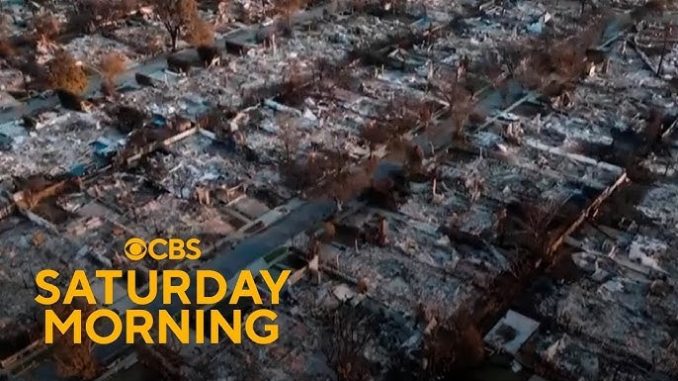
Financially preparing for a natural disaster is a task that often gets pushed aside until it’s too late. The unpredictability of events like floods, earthquakes, hurricanes, or wildfires makes it easy to assume they won’t happen to you—until they do. While physical preparedness is crucial, financial readiness can be the difference between a temporary setback and a long-term crisis. It’s not just about having money set aside; it’s about building a resilient financial structure that can absorb shocks, support recovery, and protect your assets when the unexpected strikes.
The foundation of financial preparedness begins with understanding your risk. Geography plays a significant role in determining which types of disasters are most likely to affect you. If you live in a coastal area, hurricanes and flooding may be your primary concern. In seismic zones, earthquakes pose a unique threat. Knowing the risks allows you to tailor your financial strategy accordingly. For example, someone living in a flood-prone region should prioritize flood insurance and ensure that their emergency fund is easily accessible in case evacuation becomes necessary. This kind of targeted planning helps you allocate resources efficiently and avoid overspending on unlikely scenarios.
Insurance is one of the most powerful tools in your financial disaster toolkit, but it’s often misunderstood or underutilized. Standard homeowners or renters insurance may not cover all types of natural disasters, and exclusions can vary widely. Flood and earthquake coverage typically require separate policies, and waiting periods may apply. Reviewing your coverage annually and speaking with a knowledgeable agent can help you identify gaps and make informed decisions. For instance, if your home is in a wildfire-prone area, you’ll want to ensure that your policy includes replacement cost coverage rather than actual cash value, which could leave you short in a rebuilding scenario. The goal is to have coverage that reflects the true cost of recovery, not just the minimum required.
An emergency fund is another essential component of financial preparedness. This fund should be liquid, meaning it’s held in an account that allows quick access without penalties. The amount you need depends on your lifestyle, obligations, and risk exposure, but a good starting point is three to six months of essential expenses. This cushion can cover temporary housing, food, transportation, and other necessities if your income is disrupted or your home becomes uninhabitable. For example, if a hurricane forces you to relocate for several weeks, having cash on hand can ease the transition and reduce reliance on credit, which may be harder to access during a crisis.
Documentation is often overlooked but plays a critical role in post-disaster recovery. Keeping digital and physical copies of important records—such as insurance policies, identification, medical records, and financial statements—can expedite claims and reduce stress. Cloud storage solutions offer a secure way to preserve these documents, while a waterproof, fireproof safe can protect physical copies. Imagine trying to file an insurance claim without proof of ownership or coverage details; the delay could cost you time and money. Organizing these materials in advance ensures that you’re not scrambling when time is of the essence.
Budgeting for disaster preparedness also means considering the costs of mitigation. Investing in home improvements that reduce risk—like storm shutters, reinforced roofing, or fire-resistant landscaping—can lower insurance premiums and minimize damage. These expenses may seem optional, but they often pay off in the long run. For example, installing a sump pump in a basement prone to flooding can prevent thousands in water damage and reduce the likelihood of mold, which can be costly to remediate. Viewing these upgrades as part of your financial strategy reframes them from discretionary spending to proactive risk management.
Credit access is another factor to consider. In the aftermath of a disaster, you may need to borrow funds to cover immediate needs or bridge gaps in insurance coverage. Maintaining a healthy credit score and having available credit lines can provide flexibility when it matters most. However, relying solely on credit is risky, especially if interest rates are high or repayment terms are unclear. It’s better to view credit as a backup rather than a primary resource. For instance, a low-interest personal loan might be useful for temporary repairs, but it should be part of a broader recovery plan that includes insurance and savings.
Communication with financial institutions is also important. Banks and lenders often offer disaster relief programs, such as deferred payments or waived fees, but these are typically time-sensitive and require documentation. Establishing relationships with your bank and understanding their policies can make it easier to access support when needed. For example, if a wildfire disrupts your income, contacting your mortgage lender early may allow you to pause payments without penalty, preserving your credit and reducing financial strain. Being proactive and informed helps you navigate these conversations with confidence.
Finally, financial preparedness is not a one-time task—it’s an ongoing process. As your life changes, so do your risks and resources. Regularly reviewing your insurance, updating your emergency fund, and revisiting your budget ensures that your plan remains relevant. It’s also an opportunity to reflect on lessons learned from past events and refine your strategy. For instance, if you experienced a flood and found your coverage insufficient, you can adjust your policy and savings to better prepare for the future. This iterative approach builds resilience and reinforces the idea that financial preparedness is part of responsible living.
Preparing financially for a natural disaster is about more than just surviving the event—it’s about recovering with dignity and stability. By taking deliberate steps to understand your risks, protect your assets, and build a flexible financial foundation, you position yourself to weather the storm and rebuild with confidence. It’s an investment in peace of mind, and one that pays dividends when life takes an unexpected turn.